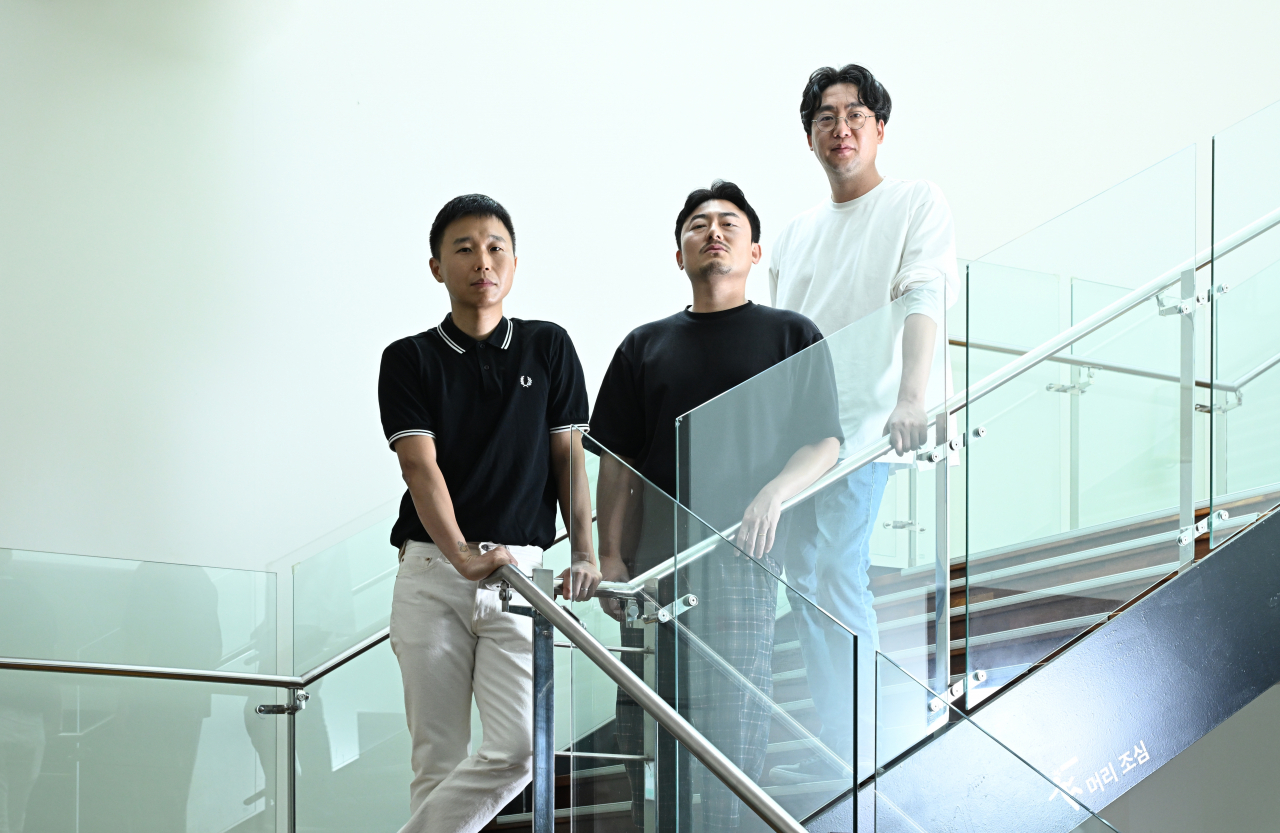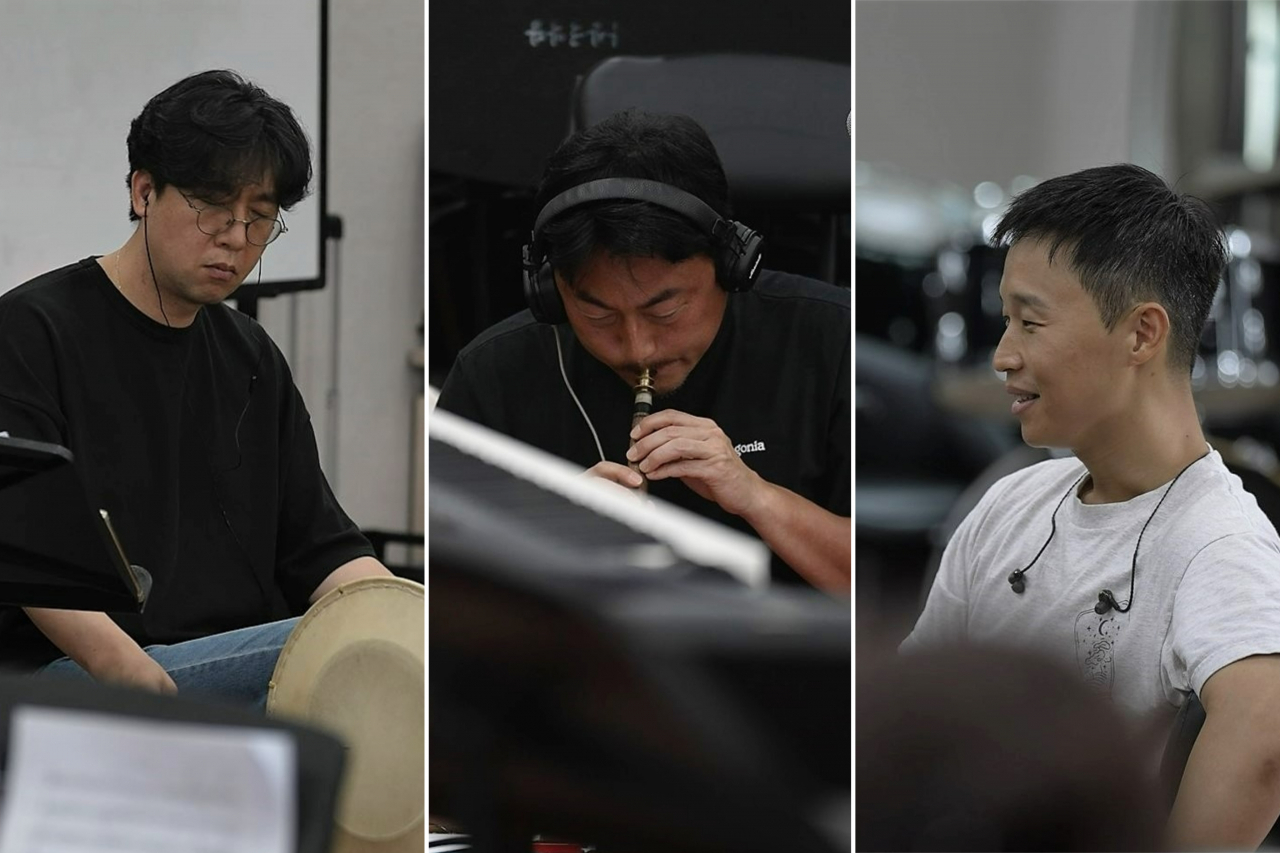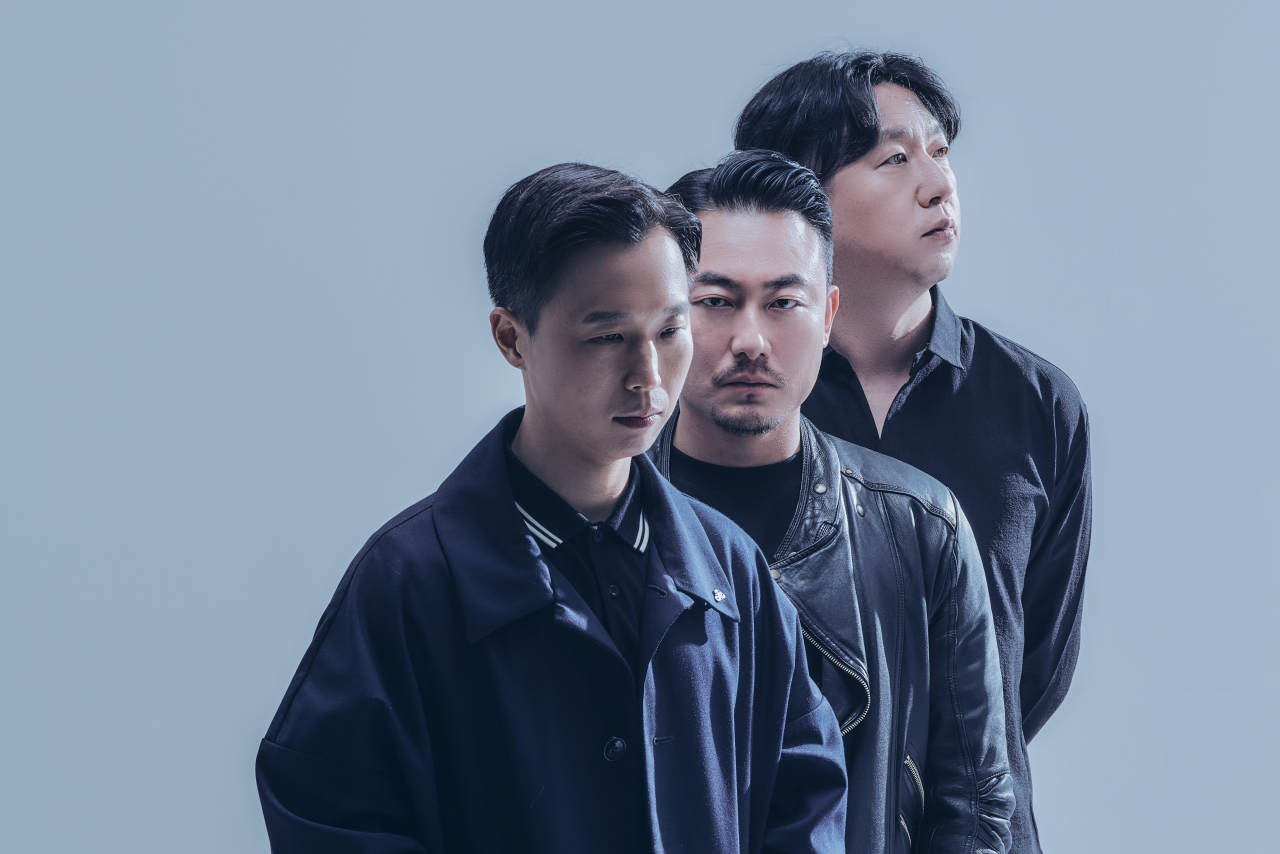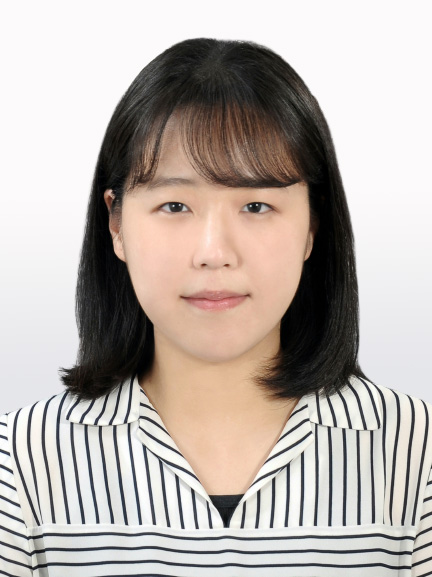[Herald Interview] Gugak musicians to revive memories of plaza in 'Gwang Gwang, Goeng Goeng'
By Hwang Dong-heePublished : Aug. 11, 2023 - 09:58

What does a plaza or a square mean to you?
A simple question yet when posed against the backdrop of Seoul’s iconic Gwanghwamun Square, it takes on a new dimension. This expansive space that stands before the majestic Gyeongbokgung Palace in the heart of the city, resonates with a tapestry of history, both past and ongoing.
Exploring the theme of "gwangjang," plaza or square in Korean, “Gwang Gwang, Goeng Goeng,” one of the 12 productions presented by the Sejong Center for the Performing Arts this summer as part of its contemporary "Sync Next" series, is scheduled to be performed at the Sejong S Theater on Tuesday.
Bringing together three close friends -- Sung Si-young, the piri musician of the Seoul Metropolitan Traditional Orchestra, Lee Il-woo, composer and piri/guitar musician of Korean post-rock band Jambinai, and genre-bending percussionist Hwang Min-wang -- the trio come together to present a new gugak sound based on originality and improvisation.
The three friends, who met during their time at the National Gugak High School and the Korea National University of Arts, have forged a bond that has endured decades.
In collaboration with sanghwang player Kim Ji-hyun and gayageum player Yoon Ji-hyun from the SMTO, as well as media artist Yun Je-ho, the team presents a performance utilizing light and sound to portray the flow of past and present through the square.
“I’ve been seeing people in the square every day during my 14 years working at the Sejong Center. I felt that this place holds the narratives of many people and wanted to bring their stories into music,” said Sung in an interview with The Korea Herald on Tuesday.
Regarding the show's title, "Gwang Gwang, Goeng Goeng," Lee explained, "Perhaps it draws inspiration from the term 'gwangjang' or the resonating sound of percussion instruments like the gong in shamanic or traditional music."
"Our mutual agreement centered around our desire to convey the stories that the Gwanghwamun Square holds -- be they historical occurrences or current events -- through our sounds,” Lee added.

Memories of ‘gwangjanag’ forge new melody
The images of the plaza held by the three musicians were diverse and ambivalent.
Hwang described it as a broad space accessible to everyone, yet acknowledged the presence of marginalized individuals within it, while Lee portrayed it as a bustling and noisy place with heavy traffic and a large number of people. Sung illustrated it as a lively space filled with activities, memories and festivities.
Lee captured different images of the plaza with his compositions, crafting eight or nine new pieces of music. Sung also contributed two or three original compositions.
The music delves into explorations and experiments with diverse approaches to traditional instrument sounds, utilizing a range of traditional instruments including the gayageum, sanghwang, taepyeongso, yanggeum and guitar. Additionally, a modular synthesizer is employed, generating an array of transformed sounds.
This fusion results in a musical blend that traverses genres of traditional Korean music, electronic music and even jazz, challenging conventional norms and creating a wholly new crossover genre.
The trio is currently undergoing a musical expansion through Lee's distinctive "musical language."
His abstract requests, such as “breathe in as if shouting,” “play the piri as if sighing” or “like breathing,” had the friends scratching their heads. Nevertheless, the earnestly amusing requests opened up uncharted territory.
“Lee's music doesn't always adhere to precise notes. Instead, it occasionally embraces improvisations and even the interpretation of emotions,” said Hwang, indicating how Lee's compositions can vary in their approach.
“It is fascinating to see a different side of (my friends) and how they approach music and their creative process more closely,” added Hwang.

Vision for 'language of traditional Korean music'
This is the second time the trio is taking the stage together, but their first full solo performance.
"About five years ago, we had an outdoor concert as part of a festival, where we played for around 20 minutes,” said Sung. "Our mindset is completely different now. It’s exciting to have our own solo show, and it also brings a greater sense of responsibility (to do well). We felt a bit constrained back then. This time, however, we've individually put in a lot of preparation."
“When we collaborate with other musicians, the process usually involves persuasion, defense and negotiations. But because we know each other so well, less such efforts were required,” Hwang said.
In high school, Lee and Sung teamed up for the five-member hardcore rock band 49 Morphines, while Sung and Hwang were part of three-member crossover music group NAMU, after graduating Korea National University of Arts.
After the Aug. 15 performance, the three friends will each go their separate ways again. However, they all spoke in unison expressing their intention to pursue individual musical directions through the "language of traditional Korean music."
“Music is constantly evolving and the pace of change seems to be getting faster than before. My perception is that with good people, we can create good music,” said Hwang.
“I feel there’s a bias toward my music (and Jambinai's music) being characterized by loudness and strong beats. I want to break away from that stereotype and explore a more ‘tender’ musical expression -- something that melds tradition with a modern touch,” said Lee.
Sung chimed in, “If this project goes well, I hope we can extend this and work on other projects in the future, perhaps we could reunite for other projects down the line.”



















![[Today’s K-pop] Treasure to publish magazine for debut anniversary](http://res.heraldm.com/phpwas/restmb_idxmake.php?idx=642&simg=/content/image/2024/07/26/20240726050551_0.jpg&u=)